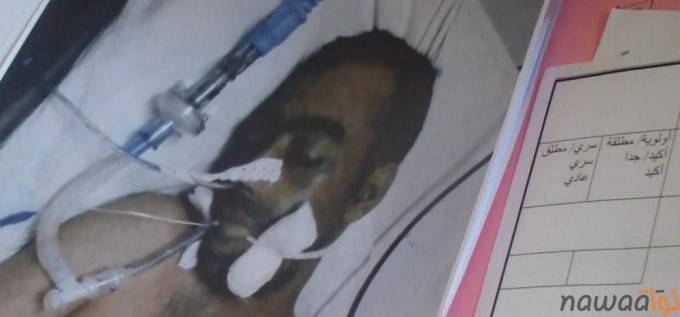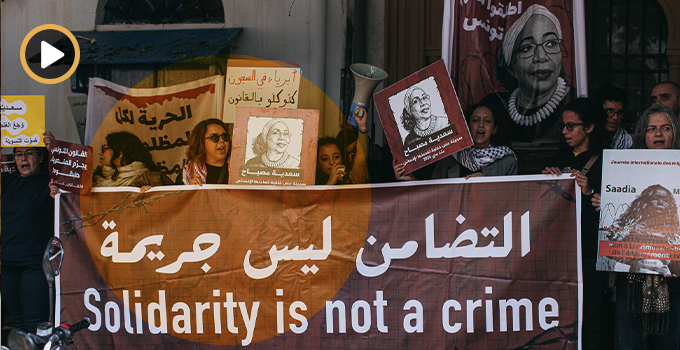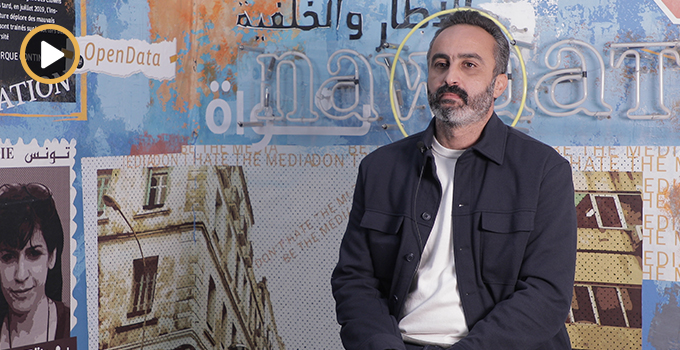– Everyone has the right to life, liberty and security of person.
– No one shall be subjected to torture or to cruel, inhuman or degrading treatment or punishment.
Articles 3 and 5 of the Universal Declaration of Human Rights
Looking over the details of the case of Abdul Rauf Khamasi, one question repeatedly comes to mind: how many more victims of torture do we need to see before we demand the State to implement actual reform?
We are still yet to see any real reform in the security sector. It remains highly dysfunctional and little has changed in terms of its internal management.
On 8 September 2012, Abdul Rauf Khamasi, a Tunisian citizen and family man, died after being tortured at the headquarters of the judiciary police in Sidi Huseein in the region of Sijoumi.
Events can be traced back to 28 August when Abdul Rauf Khamasi was brutally tortured at the headquarters of the judiciary police in Sijoumi during an interrogation for what Khamasi’s lawyer, Abdul Haq Altariki says was a false charge of theft. On that day, Khamasi was taken away by the security forces outside the Salah-Aziz Institute to which he was accompanying his wife for her cancer treatment.
On the night of his death, when the victim’s lawyer elected to speak out to the media, the official spokesperson of the Interior Ministry was quick to deny the news of his death, saying, instead, that he remained in a critical condition. He went on to point out that, since this incident had taken place, the Public Prosecutor had launched an investigation into the “incident” and suspended the man responsible from further work pending investigation.
In a telephone conversation with Khamasi’s lawyer Abdul Haq Altariki, he informed me that the statement of Interior Ministry spokesman Khaled Tarrouash strayed very far from the truth and that it contained a number of distortions with regard to Khamasi’s death. He indicated that his client died on Saturday evening when all brain function ceased, at which point further medical treatment was stopped. A death certificate was subsequently released, stating the time of death as 20:05. Tariki went on to say that the tone of public statements made by spokesman Khaled Tarrouach sought to downplay the seriousness of the attack on his client. He also told me that four people have been suspended pending investigation in this case.
In an attempt to “clarify” the situation, the Interior Ministry put out a report on 10 September stating that:
On 8 September Abdul Rauf Khamasi, born in 1972, died at Charles-Nicolle hospital. Khamasi had been arrested and taken to the headquarters of the judiciary police in Sidi Hussein pending investigation into criminal charges.
When, on that day, the arrestee fell unconscious, he was taken to the emergency department of Charles-Nicolle hospital where he was diagnosed with concussion. This necessitated his being placed under observation in the recovery wing of the hospital.
The Interior Ministry was quick to open an administrative investigation into this case and also informed the Public Prosecutor which took up the case and launched a full investigation on 30 August 2012. Following the death of the aforementioned on the evening of Saturday 8 September, the judge gave authorization for the holding in custody, pending ongoing investigations, of four security agents present at the questioning of the deceased.
One notices firstly the conflicting nature of the accounts given by the Interior Ministry report and the statements of its official spokesperson with regard to the number of agents accused and the events leading to the death.
In order to make further inquiries into this case I visited, on 10 September, the offices of the victim’s lawyer, Abdul Haq Altariki. He informed me that the decision of the Public Prosecutor to file murder charges was only made on Sunday 9 September, that is to say after the death of his client and after the decision of the lawyer to speak publicly to the media.
The following is the text of the ruling of the Public Prosecutor:
Sunday 9 September 2012 the Public Prosecutor requests that the examining judge file charges of premeditated murder in accordance with paragraphs 201, 202 and 32 of the Penal Code against the accused:
1) Mohamed Ali Khamila
2) Bilal Ben Abdul Majid Abassi
3) Amr Ben Hussein Alatti
4) Walid Ben Rida AlnamushiAnd anybody else discovered to be implicated in Khamasi’s murder. It further requests the provision of the necessary judicial warrants.
The Interior Ministry claims in its report, published on 10 September, that an investigative inquiry was launched on 30 August 2012 – this is true. However, what the ministry fails to give are the subject and title of this report. An investigative inquiry was opened into “the circumstances of Abdul Rauf Khamasi’s loss of consciousness during interrogation procedures at the judiciary police headquarters in Sijoumi”. This is in contravention with proper practice since the Public Prosecutor is legally required to state both the charges and the suspects from the outset. In other words, it should not take the death of the victim and the subsequent wide media exposure for them to follow correct procedure.
To make matters worse, according to Abdul Haq Tariki, the hearings of the judiciary police agents were conducted as if the men were witnesses or themselves the victims; even though the evidence of their statements suggested that they had acted with extreme violence.
The most serious piece of evidence in all of this is a cable sent by the head of the judiciary police in Sidi Hussein, Chief Inspector Hussein Touati (Ar) on 28 August 2012 to a number of heads in the legal and security sectors (Ar) . These included the Director General of Public Security, the Attorney General at the Court of Appeal, the District Attorney at the Court of First Instance, the Regional Director of National Security, the Administrative Director of the Judiciary Police and the Regional Head of National Security in Sidi Huseein:
The cable gives an account of the events which led to Khamasi’s hospitalisation and subsequent death. In this account it is claimed that the injuries sustained were the result of a fall
The question that arises from all this is why was the head of the judiciary police was not accused straightaway of trying to cover up the murder? But even before that, why did none of those officials who received this cable react to the account given by the head of police? And why did none of them seek to examine the victim after the attack had taken place?
It is therefore clear that this police head, along with those who received the cable No. 622 of 28 August 2012, attempted to cover up the murder.
I’ve had trouble finding the words to describe the attitude of this police head, as well as those who received the cable, towards this episode. This was a cover-up attempt by both the judicial and security systems which sought to hide the truth of the murder of a Tunisian citizen at the hands of the security forces, and both of these sectors colluded in trying to allow the killers to escape justice.
In addition to this, you can read below a section of the initial forensic report in which Dr Ben Murad states that:
“The severe bleeding suffered by the deceased was likely caused by an injury to the skull inflicted by a solid object such as a large stick or similar, which rules out the possibility of it being the result of a fall”.
I’ve recently been informed by Khamasi’s lawyer that violent clashes have broken out between the people of Jerissah in the Kef governorate and the police have used tear gas and rubber bullets in the area surrounding the city. This came after the burial service of Abdul Rauf Khamasi, a father and Tunisian citizen brutally killed at the hands of the police.
Translated from Arabic by Chritopher Barrie







[…] The murder of Abdulraouf Khamasi and the attempted cover-up by the security and justice sectors By Winston Smith | September 12, 2012 | Rights | No comments […]
[…] La mort ensuite, sous la torture d’Abderraouf Kammassi, accusé de vol. Décès constaté à l’hôpital Charles Nicole, où des médecins urgentistes ont diagnostiqué une « commotion cérébrale causée par un objet contondant » lors d’un interrogatoire dans un commissariat de police de Sidi Hassine. […]